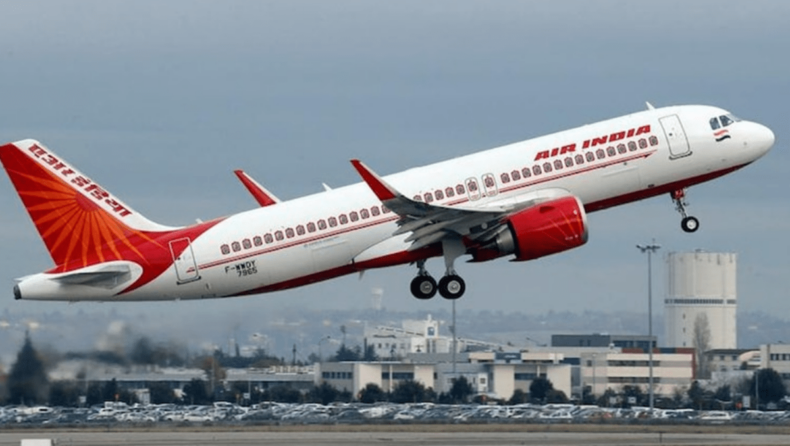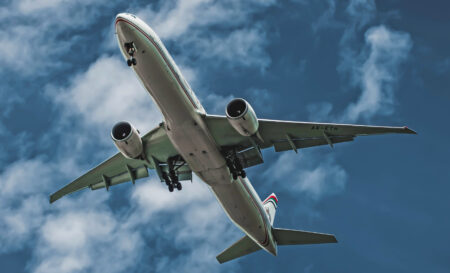Airfares are likely to fall up to 30-40% on an expected increase in the number of flights, following the government’s green light for resumption of regular international air travel from March 27, said industry executives. Global travel opens after two years of Covid-induced restrictions on travel.
Prices across the broader economy are in flux right now, with supply chain issues, inflation, and wildly vacillating stock markets leading to higher costs on everything from groceries to cars.
One area where prices haven’t been as affected: Airfare. In fact, the average cost of airline tickets, which tend to be relatively variable by nature, have been stable. But that may be about to change.
According to data compiled by travel booking site Hopper, domestic airfare is projected to increase by as much as 7% monthly through June 2022.
Currently, airlines can operate a limited number of overseas flights under bubble arrangements with certain countries, as India has clamped a ban on regular international flights. Limited capacity has pushed airfares up to 100% higher, compared to before the pandemic, on some routes such as India-US.
A demand-supply imbalance
“Suspension of regular international flights had created a demand-supply imbalance, making international travel expensive for certain routes under the bubble agreements.”
Said Aloke Bajpai, group chief executive of travel portal Ixigo.
“With capacity coming back and with an increase in connectivity and more routes, we can expect international fares returning to pre-Covid levels.”
“Had bubble flights continued, with US carriers cutting flights including to India, prices would have soared further than their current high levels.”
Said Rajesh Magow, group chief executive, MakeMyTrip.
“However, with the decision to allow regular international flights and a resultant increase in capacity, prices will stabilise.”
Bajpai of Ixigo said that while international leisure travel is seeing strong pent-up demand, business travel will take some more time to get back to pre-pandemic levels.
“Corporate travel, overall, has taken a big hit during the pandemic, especially with the shift towards remote work. Airlines will feel some impact due to slower recovery of business and leisure trips,” he said.
Increase in jet fuel prices

Surging jet fuel prices will likely contribute to higher airfare — prices increased 60% through 2021, according to Hopper. As jet fuel prices have risen in the past, consumer airfare prices have typically increased as well. Fuel represents roughly 30% of airlines’ operating expenses, according to Cowen airline analyst Helane Becker, but can be a larger percentage as prices rise.
Fuel prices typically have an impact on airfares, which, while potentially positive for airlines’ bottom lines, means higher costs for consumers.
Jet fuel price on Tuesday rose to record levels across the country following a steep 8.5 per cent hike necessitated due to a spike in international oil prices. While the jet fuel or Aviation Turbine Fuel (ATF) price has been hiked for the third time in a month, petrol and diesel prices remained unchanged for a record 88th day in a row.
Russia-Ukraine conflict impact on airfares
Oil, metal, and other commodities prices have soared as fighting in Ukraine has intensified, adding to concerns there is no end in sight to inflation.
“You can’t throw boldness on top of uncertainty”
James Gorman, Chairman and CEO of Morgan Stanley, told a conference hosted by the Australian Financial Review (AFR) newspaper.
Oil companies raised prices to a record high of Rs 93,530 per kilolitre in Delhi from March 1 – this is about 9% higher over last month and over 57% higher than last March. This increased cost is likely to be transferred to passengers, as oil constitutes up to 40% of airline’s cost of operations.
Industry insiders say that the demand has been on the rise and the current travelling passengers has been increased in contrast to the last year and fares are very likely to take off due to the lack of current competition in the Airline Industry.
“Two days ago, a Middle Eastern carrier opened its tickets and a large chunk of it was sold out in flat two days. So, there is demand but there is no new capacity joining the market, which would have helped cool off fares. Also, fares are already going up with rise in demand and set to go further high.”
Said Ajay Prakash, president of Travel Agents Federation of India.
Airlines are bringing back capacity fast and will be operating more flights than December soon. The third quarter – October to December – was one of the best quarters for Indian airlines post-Covid. Airlines like IndiGo and SpiceJet also reported profits in the quarter on the back of increased passenger numbers and high yields.
Published By: Apoorva Wakodikar
Edited By: Subbuthai Padma













